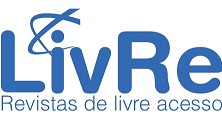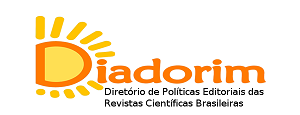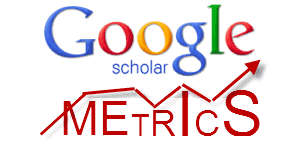WATER BASINS AND MEMETICS IN THE TEACHING OF GEOGRAPHY
an experience in the Escola Municipal de Ensino Fundamental Professora Hylda Vasconcellos
DOI:
https://doi.org/10.20873/rtg.v11i25.15001Keywords:
Memes, memetics, Watersheds, Water, GeographyAbstract
The teaching of Geography is constantly changing in contemporary times, which is notably perceived by the fact that its didactic-pedagogical methods are evolving in line with the digital age. With that, it became necessary to think about educational practices that instigate the students and, at the same time, avoid the decorative or mnemonic teaching of geographic knowledge. Throughout this work, we intend to present an experience about the use of memes and memetics, as a common language in the spatial and daily practices of young people, for geographic learning in schools. Finally, the importance of inserting playfulness in/for the teaching of Geography is highlighted, more specifically with regard to the content of hydrographic basins and other processes related to water in the dynamics of the Planet's hydrosphere, as developed in the 8th and 9th grade classes at Escola Municipal de Ensino Fundamental Professora Hylda Vasconcellos, in the municipality of Santa Maria (RS).
References
BAKHTIN, M. Estética da criação verbal. 6. ed. São Paulo: WMF Martins Fontes, 2021.
BAKHTIN, M. Problemas da poética de Dostoiévski. Rio de Janeiro: Forense Universitária. 2015.
BLACKMORE, S. The Meme Machine. Oxford: Oxford University Press, 1999.
BATISTA, N. L. Cartografia Escolar, Multimodalidade e Multiletramentos para o ensino de Geografia na Contemporaneidade. (Tese de Doutorado). Programa de Pós-
graduação em Geografia: Universidade Federal de Santa Maria, Santa Maria, 2019.
BEZERRA, M. R.; ALMEIDA, R. E. de S.; MENEZES, I. F. P. de; BESERRA, F. R. S. Entre o mundo real e virtual: A produção de memes como proposta metodológica para o ensino de Geografia. Revista Metodologias e Aprendizado, v. 4, 2021, p. 282-289. Disponível em: https://doi.org/10.21166/metapre.v4i.2249. Acesso em 10 de out. 2022.
BREDA, V. T. Jogo de tabuleiro “Conhecendo o Parque Ecológico" como recurso lúdico e educacional em Geociências. Anais do VIII ENPEC. 2011. Disponível em: http://abrapecnet.org.br/atas_enpec/viiienpec/resumos/R0037-1.pdf. Acesso em: 01 out. 2022.
CAVALCANTI, L. S. A geografia e a realidade escolar contemporânea: avanços, caminhos, alternativas. Anais do I Seminário Nacional Currículo em movimento – Perspectivas atuais, Belo Horizonte, MG, Brasil, 2010. Disponível em: http://portal.mec.gov.br/docman/dezembro-2010-pdf/7167-3-3-geografia-realidade-escolar-lana-souza/file. Acesso em: 01 out. 2022.
CAVALCANTI, L. S. O ensino de geografia na escola. Campinas, SP: Papirus, 2012.
CAVALCANTI, D. P. R.; LEPRE, R. M. Utilizando memes como Recurso Pedagógico nas Aulas de História. Congresso Internacional de Educação e Tecnologias, 2018. Disponível em: https://cietenped.ufscar.br/submissao/index.php/2018/article/view/746. Acesso em: 10 out. 2022.
CHAGAS, V. Da memética aos memes de internet: uma revisão da literatura. BIB, São Paulo, n. 95, 2021. Disponível em: https://bibanpocs.emnuvens.com.br/revista/article/view/119 Acesso em: 10 out. 2022.
DAWKINS, R. O Gene Egoísta. Belo Horizonte: Itatiaia, 2001.
DENNETT, D.C. Consciousness Explained. Boston: Little, Brown and Company, 1991.
FELTRIN, T.; BATISTA, N. L. Multiletramento: perspectivas para o ensino de língua portuguesa e leitura cartográfica no contemporâneo. In: SCHIEFELBEIN, L. R.; BIEGING, P.; BUSARELLO, R. I. (Org.). Educação 2.0: desafios e conquistas. 1ed. São Paulo: Pimenta Cultural, 2021.
LARA, M. T. DE A. A Presença de Memes em Práticas de Ensino/Aprendizagem de Língua Portuguesa: relações entre humor e ensino de língua materna em cursinhos pré-vestibulares (Dissertação de Mestrado). Programa de Pós-Graduação em Linguística e Língua Portuguesa da Faculdade de Ciências e Letras – Unesp/Araraquara, 2018.
LEINZ, V.; AMARAL, S. E. Geologia geral. São Paulo: Ed. Nacional, 1978.
LEAL-TOLEDO, G. Searching for a foundations of memetics. Trans/Form/Ação, Marília, v. 36, n. 1, 2013, p. 187-210. Disponível em: https://www.scielo.br/j/trans/a/ZDC38PhpMP5drhrTRFqRrSy/abstract/?lang=en. Acesso em: 10 out. 2022.
MASSA, M. S. Ludicidade: da Etimologia da Palavra à Complexidade do Conceito. Aprender - Caderno de Filosofia e Psicologia da Educação. Vitória da Conquista. Ano IX, n. 15, 2015, p.111-130. Disponível em: https://periodicos2.uesb.br/index.php/aprender/index. Acesso em: 03 out. 2022.
OLIVEIRA, K. E. de J.; PORTO, C. de M.; ALVES, A. L. Memes de redes sociais digitais enquanto objetos de aprendizagem na Cibercultura: da viralização à educação. Acta Scientiarum. Education, v. 41, 2019. Disponível em: https://doi.org/10.4025/actascieduc.v41i1.42469. Acesso em: 03 out. 2022.
PIAGET, J. O estruturalismo. Tradução de: Moacir R. de Amorim. 3° ed. São Paulo: Difel, 1970.
RIO GRANDE DO SUL (estado). Secretaria do Meio Ambiente e Infraestrutura - SEMA/RS. Bacias hidrográficas do Rio Grande do Sul. Disponível em: https://sema.rs.gov.br/bacias-hidrograficas. Acesso em: 05 out. 2022.
ROJO, R. H. R. Multiletramentos na escola. São Paulo: Parábola, 2012.
SANTOS, V. C. dos; RIZZATTI, M.; PETSCH, C.; BATISTA, N. L. O que não é cringe no ensino de geografia? Sobre práticas multiletradas e interatividade no processo de ensino-aprendizagem contemporâneo. Estudos Geográficos: Revista Eletrônica de Geografia, Rio Claro, SP, v. 20, n. 1, 2022, p. 59-80. Disponível em: https://doi.org/10.5016/estgeo.v20i1.16332. Acesso em 10 de out. 2022.
SHIFMAN, L. Memes in digital culture. Cambridge: MIT Press, 2014.
TUNDISI, J. G.; MATSUMURA-TUNDISI, T. A Água. São Carlos: Editora Scienza, 2020. Disponível em: https://sbhsf.com.br/wp-content/uploads/2020/08/novo_A_AGUA.pdf. Acesso em 10 de out. 2022.
Downloads
Published
How to Cite
Issue
Section
License
Copyright (c) 2022 Tocantinense Journal of Geography

This work is licensed under a Creative Commons Attribution-NonCommercial-NoDerivatives 4.0 International License.
Revista Tocantinense de Geografia does not remunerate any author for the publication of their texts. The contents of the texts published in this journal are the responsibility of the authors.








.png)












